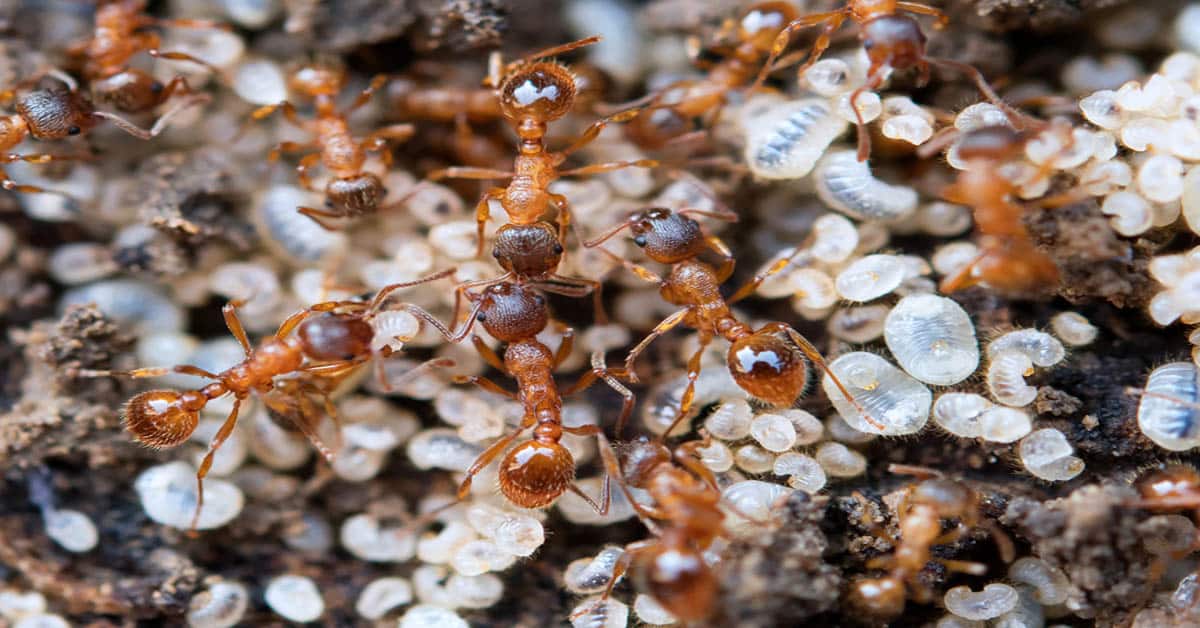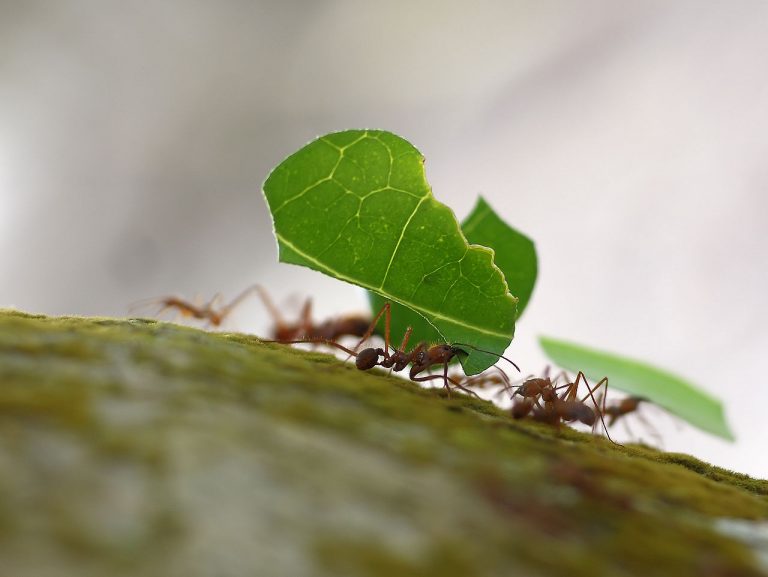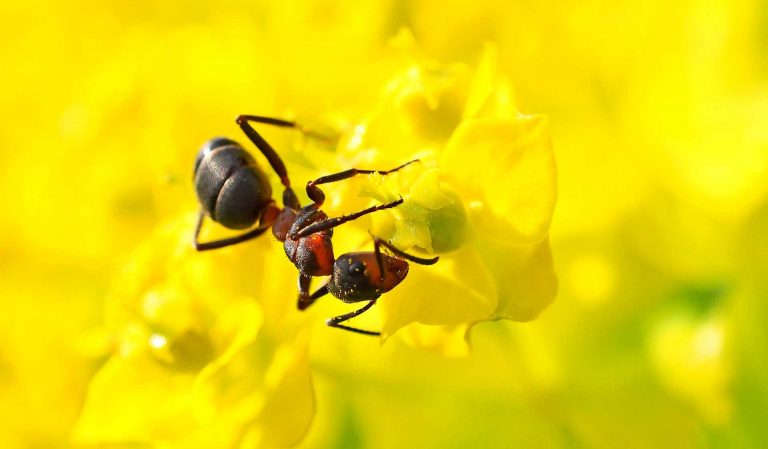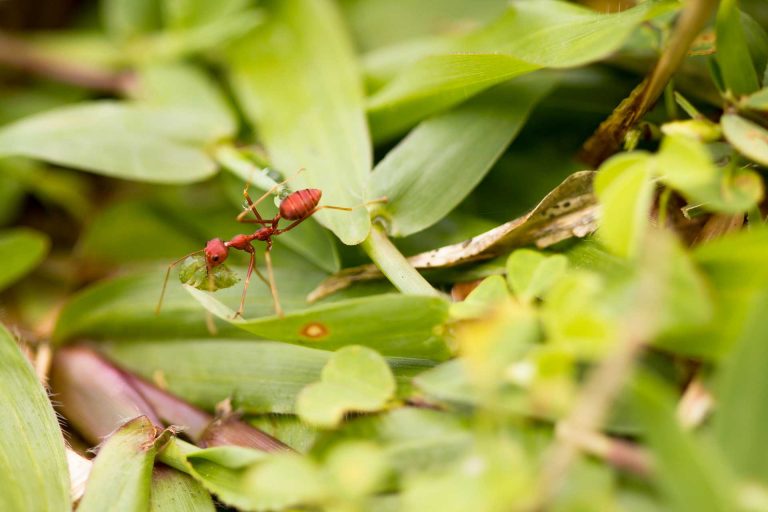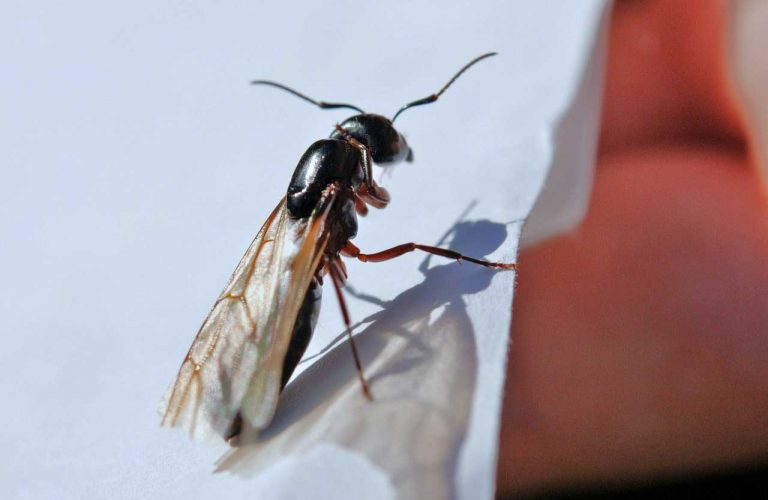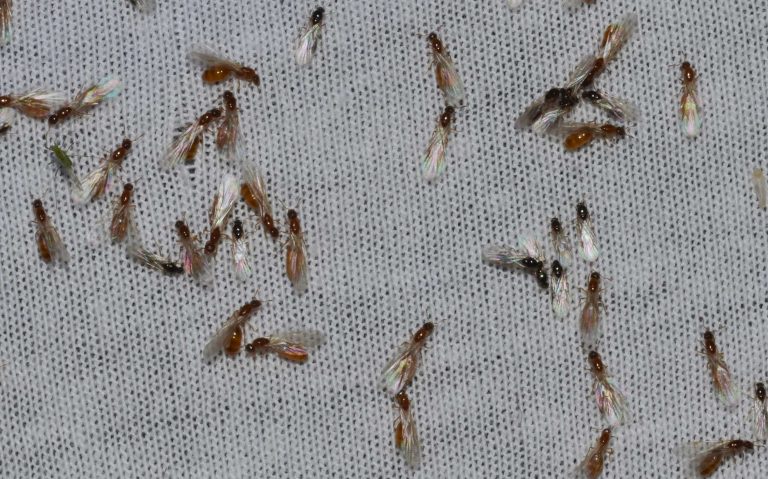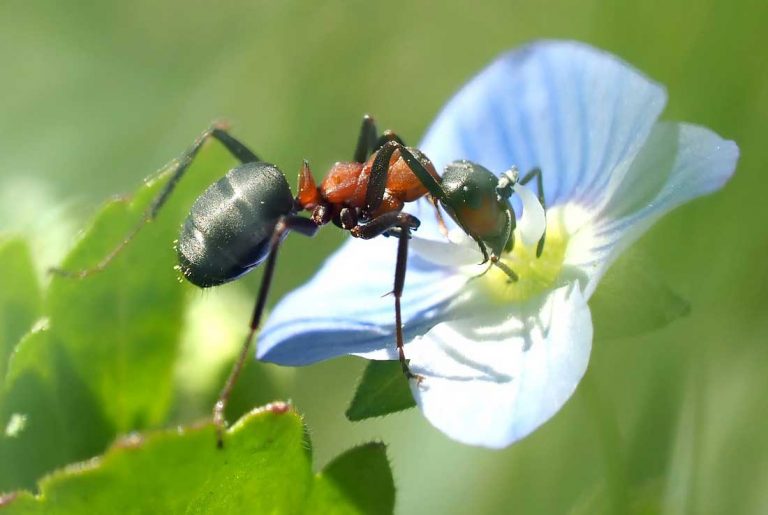Ant Larvae
Are you aware of the social activities of ants and their capacity to thrive in a wide range of habitats? These characteristics are indeed the main reasons why ants are among the most widespread and widely known insects on our planet.
Like most other animal communities, one of the main factors influencing the widespread existence of ants is reproduction and life cycle. What have you heard about ant larvae?
The ant larvae is an important stage of the ant life cycle. Their mating and reproduction habits make sure that the eggs laid will be able to survive and molt through the several phases of the ant’s life cycle — egg, larvae, pupae, and adults.
If you want to know more about these complex and interesting creatures and their larvae development, keep reading this article.
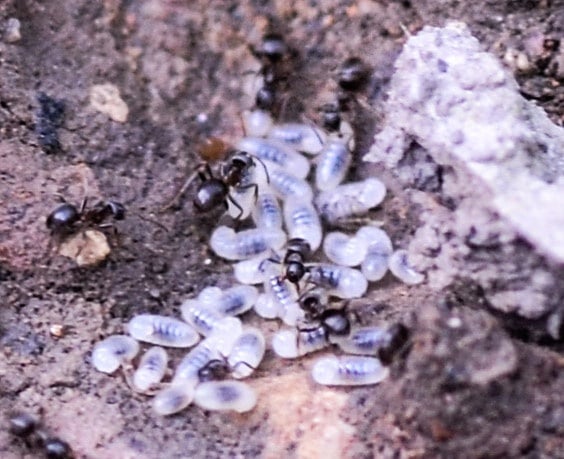
The Ant Life Cycle
An ant’s life cycle starts with an egg. Not every egg develops into an adult; nestmates eat some as extra food. An egg grows into a worm-shaped larva that has neither eyes nor legs beyond this stage.
When a larva is large enough, it later changes into a pupa. This is a time of reconstruction and rehabilitation. Pupae resemble adults more, despite having their legs and antennae folded inward against their bodies.
The pupa eventually becomes an adult. Young adults frequently have lighter skin tones, which deepen with age. Depending on the species and the environment, the development process from egg to adult might take several weeks or months. Now let’s find out more about ant larvae and their unique characteristics.
General Information About Ant Larvae
After laying eggs, ants develop into adult ants after 7 to 14 days. They begin to hatch, and as is natural, the head emerges first. As a result, the ant larvae resemble ant eggs nearly exactly, except that the eggs have small heads that constantly need food. The larvae can stick together during transportation because of their adhesiveness.
This is the time when the ants choose their life roles or obligations. So the ant life cycle larval stage appears to be the most crucial. An ant can develop into a queen, a male, or a worker, depending on how much food is provided. The worker ant is the smallest when food availability and ant size decline.
What Do Ant Larvae Eat?
Ant larvae spend most of their growing time feeding. They are primarily fed proteins by the worker ants, which are crucial for the process of body formation. Ant larvae can be observed moving around and changing positions to attract the attention of the worker ants, who very obediently provide them with food.
These feeds are first digested by the workers, who then liquidize them and regurgitate them to the larvae. Liquids are simpler to digest than solid foods. Researchers have discovered that some ant species feed their larvae solid food that has been ground into tiny particles.
Although they can break down solid foods, larvae consume liquid food. These ant feeds include the bodily fluids that ant workers have regurgitated, which meet all their nutritional requirements for survival and growth. Did you know that larvae can be consumed by both the queen and the worker ants?
The larvae can also be used as a food source during times of shortage. Despite how cruel it may appear, the queen must continue to live for the colony to survive. The worker ants will stop at nothing to protect her health and wellness. Even if it means she has to feed her young to her.
Why is the Ant Larvae Stage Important?
Ant larvae are not entirely harmful, despite what you would think. Some ant species, like weaver ants, use the silk that their larvae produce to sew together the leaves that they use to construct their nests.
Additionally, the ant larvae appear to possess a skill that the adult ants do not. According to recent studies, some meals that adult ants need but can’t digest on their own because of their small waists are helped in the digestion process by larvae.
Therefore, the adult ants grab these nutrients and place them on the larvae’s belly. The ant larvae naturally lay on their backs during this phase. The digestive gland holes located all over the larvae’s body are subsequently used to create enzymes. Enzymes gradually transform food into a thick liquid. Then the worker ants appear and consume the food, bringing some to the queen.
What Does Ant Larvae Look Like?
The ant larvae have hook-like shapes and are white with a hint of transparency. Similar to the sticky outer layer of ant eggs, they feature hairs that attach to their surfaces. Ant larvae resemble tiny maggots and are extremely similar to ant pupae in appearance. Both ant larvae and ant pupae are covered in a white, waxy layer that gives them the appearance of being white or yellowish. Ant larvae also lack the completely formed muscles and wings that they subsequently acquire as adults.
Additional Stages of the Larval Stage
There appear to be additional stages in the larval stage. Larvae are known to go through stages of development known as molting, and during each step, the larvae shed their skin. The larvae may lose their skin a minimum of three times in total.
Fire ants have been observed helping their larvae shed skin and remove waste materials, but most ant species leave the larvae to develop on their own without much intervention. Additionally, they lick, move, and vigorously protect themselves from any intruders. The larvae can be just as significant as the queen.
Although it is not certain, the vast majority of the thousands of species of ants have four separate stages in which their larvae develop. These phases see adjustments to the larvae’s external and internal structures. Ant larvae grow bigger and straighter with each stage, changing in size.
Ant Larvae Appearance by Stages
The texture and appearance of the hairs on the body also differ. The larvae’s first stage has softer, shorter hair that seems to have some sheen to it. The hairs, however, gradually turn rough with hook-like points as the larvae progress to their fourth developmental stage.
The larvae appear to have acquired a method of excretion towards the conclusion of the fourth stage, and this method appears to take the form of a single, black solid pellet that protrudes from the end of the larvae’s bodies.
Ant Swarms and Starting a New Colony
The first and most significant component of any ant colony is the queen, whose sole purpose is reproduction. At the start of this reproductive behavior, winged males and virgin winged queens swarm out from the existing nest in search of a partner from another colony. Once mated, the queen never mates again. To allow the sperm to fertilize the eggs she produces, she gathers the male’s sperm and retains it in a specific pouch until she opens it.
After mating, both male and female ants remove their wings. The queen quickly leaves in search of a location to build her new nest. If she survives, she digs a nest, lays her eggs, and raises her first brood all by herself with only workers as help.
Because her fertilized eggs either develop into wingless female workers or into virgin queens with the ability to procreate, the queen of the nest defines the sexes and duties of her offspring. The sole purpose of wingless males, who are hatched from unfertilized eggs, is to impregnate a virgin queen.
The queen produces countless workers by secreting a chemical that prevents the development of the female larvae’s ovaries and wings. Virgin queens are only generated once there are enough workers to maintain the colony’s growth.
What to Do If You Have Ant Larvae in Your House
Larvae of ants will remain in the nest. If you find ant larvae in your home, it likely suggests there is an ant nest nearby because they are helpless and need to be cared for. Ants may have built a nest in your home and have started relocating their young into the new nest. The rest of the colony is the issue, not the larvae.
There are numerous approaches to solving this issue:
- Search for some natural ant control methods, such as essential oils or sprays
- Use ant traps or ant bait stations
- Pesticides
- Make an extermination call
For varying-sized infestations, the various methods of ant control are effective. Calling pest control is advised if you have a significant issue.
Final Words
Ants are very complex creatures with unique habits and characteristics. They have their own civilization and are known as one of the most hard-working insects. The larval stage is an important part of their life cycle and crucial for their survival and development.
To sum up, ant larvae are found deep within the ant colony. Ants are born as eggs, develop into ants, then change into pupae before reaching adulthood and becoming worker ants. That’s how ant species continue to evolve.

Nato is a content writer and researcher with a background in psychology who’s eager to explore the wonders of nature. As a travel enthusiast and animal lover, she hopes to inspire others to discover and cherish the beauty and importance of the natural world.

